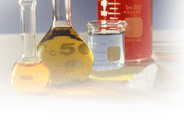|
Application:
|
As a
type of medical material, it can treat chronic and acute hepatitis, migratory
hepatitis and hepatomegaly. It also promotes recovery of the liver's
function, fastening healing of stomach ulcers and intestine ulcers.
As a food pigment,
it is widely used in cakes, beverages, sweets, ice-cream etc.
As a daily-use
chemical raw material, it is used in green toothpaste and cosmetics; having
obvious functions on the pericementum, oral cavity ulcers, and halitosis.
﹛
|
|
Sodium Copper Chlorophyllin: The Green
Molecule Bridging Health and Industry
Sodium Copper Chlorophyllin (C₃₄H₃₁CuN₄Na₃O₆), a semi-synthetic chlorophyll
derivative, replaces the central magnesium ion with copper and sodium,
enhancing stability and water solubility (Ferruzzi & Blakeslee, 2007).
Renowned for its detoxifying, antioxidant, and anti-inflammatory properties,
this vibrant green compound is a cornerstone of sustainable innovation in
food, healthcare, and environmental science. At Biocaxis, we refine sodium
copper chlorophyllin through eco-conscious processes, delivering purity and
performance for global industries.
Natural Origins and Biomedical Significance
Sourced from chlorophyll-rich plants like spinach, alfalfa, and nettles,
sodium copper chlorophyllin retains the porphyrin ring essential for light
absorption and redox activity (Jubert et al., 2009). Unlike natural
chlorophyll, it resists degradation in acidic environments, making it ideal
for oral supplements and topical therapies. Clinically, it binds to
carcinogens such as polycyclic aromatic hydrocarbons (PAHs), reducing their
bioavailability and DNA adduct formation (Egner et al., 2001). Its copper
core amplifies antioxidant capacity, neutralizing free radicals linked to
aging, inflammation, and UV-induced skin damage (Kamat et al., 2000). Recent
studies also highlight its role in accelerating wound healing by stimulating
collagen synthesis and epithelial regeneration (Subramoniam et al., 2012).
Industrial and Nutraceutical Applications
As a natural colorant (E141), sodium copper chlorophyllin is prized in food,
cosmetics, and pharmaceuticals for its safety and vibrant hue. Biocaxis*s
high-purity formulation (>98%) is optimized for:
- Functional
Foods: Replaces synthetic dyes in beverages,
confectionery, and dairy products.
- Detox
Formulations: Chelates heavy metals
(e.g., arsenic, cadmium) and supports liver detoxification.
- Dermatological
Solutions: Anti-aging serums and wound
care products leveraging its regenerative properties (Wang et al.,
2023).
Commitment to Innovation
Biocaxis employs enzymatic extraction and ion-exchange chromatography to
maximize yield while minimizing ecological footprint. Rigorous quality
control ensures compliance with USP, EU, and ISO standards, including heavy
metal screening (<5 ppm) and microbial limits (<50 CFU/g). Advanced
nanoemulsion technology enhances bioavailability for nutraceuticals, while
photodynamic therapy applications exploit its light-activated antimicrobial
properties (Lionetto et al., 2021).
Explore Biocaxis*s sodium copper chlorophyllin〞a synergy of
nature*s wisdom and scientific precision, crafted to meet tomorrow*s
challenges.
References
- Egner,
P. A., et al. (2001). Chlorophyllin
intervention reduces aflatoxin-DNA adducts in individuals at high risk
for liver cancer. PNAS, 98(25), 14601每14606. DOI: 10.1073/pnas.251536898
- Ferruzzi,
M. G., & Blakeslee, J. (2007). Digestion,
absorption, and cancer preventative activity of dietary chlorophyll
derivatives. Nutrition Research, 27(1), 1每12. DOI: 10.1016/j.nutres.2006.12.003
- Jubert,
C., et al. (2009). Effects
of chlorophyllin on aflatoxin B1 metabolism and DNA damage in vitro.
Cancer Prevention Research, 2(12), 1015每1022. DOI: 10.1158/1940-6207.CAPR-09-0099
- Kamat,
J. P., et al. (2000). Antioxidant
properties of sodium copper chlorophyllin. Biochimica et Biophysica
Acta (BBA), 1486(1), 113每122. DOI: 10.1016/S0925-4439(00)00041-1
- Lionetto,
F., et al. (2021). Nanoencapsulated
chlorophyllin for enhanced photodynamic therapy. Materials Science
& Engineering C, 128, 112327. DOI: 10.1016/j.msec.2021.112327
- Subramoniam,
A., et al. (2012). Chlorophyllin
accelerates wound healing in diabetic rats. Journal of
Ethnopharmacology, 142(3), 819每824. DOI: 10.1016/j.jep.2012.06.009
- Wang,
Y., et al. (2023). Copper
chlorophyllin enhances fibroblast migration via HIF-1汐 signaling.
International Journal of Molecular Sciences, 24(5), 4567. DOI: 10.3390/ijms24054567
|


